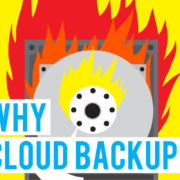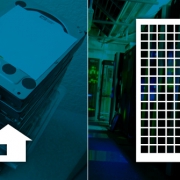Optimize Security by Using Third Party Disaster Recovery Services
Either in school or our places of work, we’ve all been through a fire drill at least a few times in our lives. Often, this exercise in disaster preparedness is considered to be nothing more than an annoying inconvenience to those who’s schedules it may disrupt. However, anyone within a school or business responsible for the safety and lives of its students or employees understand the importance of this often seemingly disruptive event, and makes performing it diligently and properly a top priority.
Of course, when it comes to protecting your company’s data, the same principal applies. Indeed, being prepared in case of hardware failures, human accidents or natural disasters that would bring about data loss must be of the highest concern for any company that wants to maintain itself in the long run. Bearing this in mind, it is important to keep up with all changes and advancements in disaster recovery (or DR) practices and services.

The face of disaster recovery, how it’s implemented, etc., are indeed in a state of flux. While in the past it was considered sufficient to simply make sure that you had an up-to-date backup of your data somewhere, either in the cloud or stored on tapes or hard drives, it is now understood that if you want to truly be prepared you have to take many more steps to be considered completely ready for data loss disaster. Examples of these steps include training your employees so that they know what to do in the event of an IT disaster, and planning ahead with the use of risk assessments as well. However, luckily for businesses, the face of IT disaster recovery has been streamlined quite a bit by cloud computing and virtualization. Higher levels of disaster recovery infrastructure are now much easier to bring about because companies can take advantage of third party services in the cloud to not only store their backed up data, but also to assist in almost all the other aforementioned areas of DR as well. After all, why not leave as much of your DR concerns in the hands of experts?
So, how does one go about making sure that they choose the right IT disaster recovery specialists for their business? Well, first off, it is important to figure out what sort of disaster recovery services your company requires in the first place. Luckily, most cloud DR specialists offer many different levels of DR services to match your businesses’ individual needs, including making sure that their infrastructure matches your company’s IT environment. For this reason you should only have to hire one DR specialist company for all of your DR needs.
Another thing to remember when choosing which DR service provider to go with is the importance of thoroughly examining the fine print and privacy details that are presented by the DR company in question. After all, this is your company’s data we’re talking about here, and security breaches of your company’s classified files would just be another kind of IT disaster! Also, as soon as your disaster recovery specialists begin implementing their services for your company, you must be sure to schedule regimented recovery tests so that you know that they are indeed doing their job.
So, there you have it; while the face of IT disaster recovery has become more complicated and multifaceted, it can also be rendered much easier, efficient and effective, as long as you make sure to choose the right DR specialist for the job.








Leave a Reply
Want to join the discussion?Feel free to contribute!